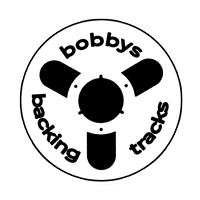Cultivating better stage presence is crucial for performers when gigging in front of live audiences, especially when using a backing track. Here are some ideas to help you improve your stage presence and engage with your audience effectively.
Practice, Practice, Practice
The first step to developing better stage presence is to practice your performance regularly. This includes not only rehearsing your music and vocals but also working on your stage presence. Practice moving around the stage, making eye contact with the audience, and engaging with them in between songs. The more comfortable you are on stage, the more confident and engaging you will appear to your audience.
Connect with Your Audience
One of the most important aspects of stage presence is connecting with your audience. Make sure to engage with them throughout your performance by making eye contact, smiling, and interacting with them in between songs. This can help create a more intimate and memorable experience for your audience and make them feel more connected to you as a performer.

Use Body Language
Body language plays a huge role in how you are perceived on stage. Make sure to use open and confident body language, such as standing up straight, moving around the stage, and using expressive gestures while performing. This can help convey your emotions and energy to the audience and make your performance more engaging and dynamic.
Work on Your Stage Presence
Stage presence is not just about how you look and move on stage, but also about how you engage with the audience and convey your emotions and energy. Work on developing your stage presence by practicing different ways to connect with the audience, such as telling stories, making jokes, or sharing personal anecdotes. This can help create a more engaging and interactive performance that will leave a lasting impression on your audience.
Use Backing Tracks Wisely
When using backing tracks in your performance, it’s important to use them wisely to enhance your performance rather than detract from it. Make sure to practice with the backing tracks beforehand to ensure they are synced up correctly and complement your vocals and music. Additionally, consider using backing tracks as a tool to enhance your performance, such as adding extra layers to your music or creating a more dynamic sound.
Engage with Your Band
If you are performing with a band, make sure to engage with them on stage as well. This can help create a more cohesive and dynamic performance and show that you are connected with your band mates. Consider practicing together regularly to ensure that you are all on the same page and can feed off each other’s energy on stage.

Be Authentic
Authenticity is key when it comes to stage presence. Make sure to be yourself on stage and let your true personality shine through. This can help create a more genuine and relatable performance that will resonate with your audience. Don’t be afraid to show emotion and vulnerability on stage, as this can help create a deeper connection with your audience.
Engage with the Venue and Audience
When performing live, it’s important to engage with the venue and audience to create a more immersive experience. Consider interacting with the venue staff and audience members before and after your performance, such as thanking them for coming out or asking for feedback. This can help create a more welcoming and inclusive atmosphere that will make your audience feel more connected to you as a performer.
Choose the Right Software and Hardware
When it comes to using backing tracks live, it’s important to choose the right software and hardware for your setup. There are many different options available, from dedicated backing track software to digital audio workstations (DAWs) like Ableton Live, Logic X ( that’s what I use) and of course Pro Tools. Make sure to choose a program that is reliable, easy to use, and can handle the demands of a live performance. Additionally, invest in high-quality audio interfaces, MIDI controllers, and other hardware to ensure a smooth and professional performance.
Practice with the Backing Tracks
Once you have your backing tracks ready, it’s essential to practice with them extensively before your live performance. Make sure to rehearse with the backing tracks in various settings, such as different venues or with different sound systems, to ensure that everything sounds great and runs smoothly. This will help you feel more confident and comfortable using backing tracks during your live performance.

Use Click Tracks and Cue Tracks
Click tracks and cue tracks are essential tools for keeping your performance tight and on track when using backing tracks live. A click track provides a steady metronome click to keep you in time with the backing track, while cue tracks can signal when to start or stop certain sections of the song. Make sure to set up your click and cue tracks properly in your software and practice playing along with them to ensure a seamless performance.
Backup Your Tracks
One of the biggest fears when using backing tracks live is technical issues or track failures. To prevent any disasters, make sure to have backup plans in place. This could include having duplicate copies of your tracks on different devices, using a backup laptop or tablet, or even having a backup band member ready to take over if needed. Additionally, consider having a backup plan for your hardware, such as extra cables, batteries, or a spare audio interface.
Communicate with Your Band mates
If you are performing with a live band, communication is key when using backing tracks. Make sure to discuss the backing track setup with your band mates and ensure that everyone is on the same page. This includes setting up cues for when to start or stop the tracks, as well as any tempo changes or other important details. Practice playing together with the backing tracks to ensure that everyone is in sync and comfortable with the setup.
Integrate Live Instruments
While backing tracks can enhance your live performance, it’s important to find a balance between using tracks and playing live instruments. Consider integrating live instruments into your performance to add a dynamic and organic element to your sound. This could include playing guitar solos, adding live percussion, or incorporating live vocals. Experiment with different combinations of live instruments and backing tracks to create a unique and engaging performance.
Experiment and Have Fun
Finally, don’t be afraid to experiment and have fun with your backing tracks live. Use this opportunity to try out new ideas, arrangements, or effects that you may not be able to achieve with a traditional live band setup. Embrace the creative possibilities that backing tracks offer and use them to enhance your live performance in unique and exciting ways. Remember to enjoy the process and have fun on stage – after all, that’s what live music is all about!
In conclusion, using backing tracks live can be a powerful tool for enhancing your performance and creating a dynamic and polished sound. By following these tips and tricks, you can ensure a smooth and successful live performance with backing tracks. Remember to choose the right software and hardware, create custom tracks, practice extensively, use click and cue tracks, mix and balance your tracks, backup your tracks, communicate with your band mates, integrate live instruments, engage with your audience, and most importantly, have fun and experiment with your backing tracks live. With the right preparation and mindset, using backing tracks live can take your performance to the next level and leave a lasting impression on your audience.
Get creative with high quality track stems
See ya next time!


